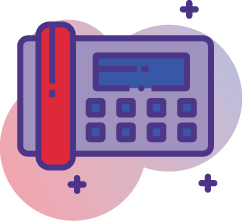
Demi Lovato, an American singer, songwriter, and activist, recently announced that they want to be referred to as nonbinary, which means Demi isn’t a she nor a he. Demi is a “they.”
Demi isn’t the only one to announce they prefer that pronoun. I think we’ve all become more aware of people’s choice of pronouns. Many people now put their preferred pronouns on their email signature or LinkedIn profile.
[ctt template=”3″ link=”42B3F” via=”yes” ]Whatever pronouns people choose to use is their right, and as professionas, we need to respect that right.[/ctt]
Whatever pronouns people choose to use is their right, and as professionals, we need to respect that right. The challenge many of us are having is in changing our language and writing. For many of us, the pronoun they seems difficult to use grammatically based on our (albeit) dated education.
In grammar, a personal pronoun is a substitute for a proper noun—such as a person’s name. I, you, he, she, they, us, and them are all personal pronouns. In other words, a pronoun is a type of grammatical label.
Most of us were taught in school to use he/him or she/her as singular, and they/them as plural (more than one). However, we already use they to describe one person, in lots of situations. “See that? They cut me off!” Here, we’re referring to one person—the driver of the car. “Who put in this breaker switch? They obviously don’t know how to wire a house!” The they in this sentence is one electrician. Now that I’ve mentioned it here, you’ll probably catch yourself using they to describe one person without even realizing it.
In September 2019, Merriam-Webster updated its definition for they: “Used to refer to a single person whose gender identity is nonbinary.” (Nonbinary people do not identify as exclusively male or female, genders that may have been assigned to them at birth.) In 2019, “they” was the word of the year.
Some people find this concept challenging. An easy way to think about it is that just because, biological gender is assigned at conception, it doesn’t mean that’s the gender with which they actually identify. Science demonstrates that there are myriad contributing factors between conception and birth which can create an alternate gender identity. In other words, people who are nonbinary don’t “Choose to be” nonbinary—they’ve been nonbinary since the womb. Their parents or society put a label on them that may have been appropriate for their biological gender, but wasn’t appropriate for their true gender identity. These days, more people are more comfortable openly declaring which label (pronoun) feels most appropriate for them.
My friend Jayne had a baby 29 years ago, Mikey. A year ago, Mikey let her know that the pronoun they is appropriate when referring to them. Mikey does not want to be referred to as he and is quite appreciative when people use the correct pronoun for them. Mikey’s mother has a hard time not referring to them as he, and it can be frustrating and even traumatic for Mikey when their mother misgenders them. It may feel to Mikey as though their mother isn’t seeing them as the person they truly are, rather than the way society says they should be seen. (Of course, Mikey also understands that everyone makes mistakes.)
We need to be aware of gender-neutral pronouns in our business communications. According to a Pew Research Center survey conducted three years ago, one in five Americans say they personally know someone who prefers a gender-neutral pronoun such as they rather than he or she. https://www.pewresearch.org/social-trends/2019/01/17/generation-z-looks-a-lot-like-millennials-on-key-social-and-political-issues/#generations-differ-in-their-familiarity-and-comfort-with-using-gender-neutral-pronouns
If you had a friend who was assigned the label of male at birth but now chooses to be recognized as female, would you have a hard time referring to her as she? I certainly wouldn’t, and calling her he would be an insult in my eyes.
Similarly, once Mikey lets me know they prefer they, using a different pronoun for them would be disrespectful to them. Gender pronouns proclaim someone’s identity to the world, and if the words he or she don’t represent their identity, it makes sense to use one that does.
Who says? They do. We can’t know what gender someone is. We can sometimes know the gender society would like to label them, but that’s not necessarily their actual gender. And for people who are nonbinary, it can be a difficult conversation, so by all of us putting our gender pronouns in our email signature, it normalizes the declaration of various pronouns. That can make it easier for nonbinary people to let us know their pronoun.
In business, we might not always have the opportunity to know how others prefer to be referred. It might not feel appropriate to ask; and yet we still want to be respectful when addressing or referring to them. Whether it is a corporate value or not, I believe most businesses want to foster a diverse and inclusive environment.
[ctt template=”3″ link=”5btB8″ via=”yes” ]Some tips to keep in mind as we adjust our corporate communications to respect pronoun selection.[/ctt]
Here is what we need to adjust in our corporate communications:
– Stop using the phrases “Ladies and Gentlemen” or “Hi guys” when addressing a group of people. Instead, we can use “Hi everyone” or “Good morning, team”.
– Use they for people whose gender pronoun preference is they. This includes in corporate minutes. Instead of “He shared the results from the third quarter,” write instead, “They shared the results from the third quarter.”
– If you are unsure which pronoun to use, replace it with the proper noun—their name. In other places, you can usually rewrite the sentence to avoid using any pronoun. “Let Rhonda know the meeting is starting.”
– Consider adding pronouns to your own email signature and online profiles. This normalizes the announcement of gender pronouns for everyone, making it more comfortable for people to offer their own pronoun.
– Don’t make assumptions, and when you’re unsure, it’s better to use gender-neutral pronouns (they, them, their) for everyone rather than the wrong gender pronoun.
– Don’t be afraid to ask. It is fine to say, “I just want to make sure I’m using the correct language to refer to you.” To make this question easier, share your personal pronouns first. “Hi, my name is Rhonda Scharf, and I use she/her pronouns.”
– Keep your eyes and ears open for unintentionally gendered language. It is easy to accidentally say things like, “Ladies’ night tonight!” or “Can I get you a coffee, sir?” Catch yourself when you say those (changing our language patterns is very difficult), and switch the words to “Friends’ night tonight!” or “Can I get you a coffee?” Be aware of outdated gender-specific titles like policeman (police officer), waitress (server), or fireman (firefighter).
Don’t hesitate to catch yourself when you slip up. It is bound to happen. When Jayne refers to her “son,” they jump in and say, “Mom…” and Jayne corrects her language. If I accidentally refer to Mikey as he, I quickly jump in and say, “Oh, I’m sorry, they not he,” and continue with my sentence. I try not to be obvious or pedantic about it, which as you can imagine could make the situation even more awkward for them.
Try to put yourself in the other person’s shoes. Has there ever been a time when someone used a label for you that didn’t fit? Did it make you wince when you heard it? Perhaps you didn’t want to make a big deal out of it; you were worried about making a scene and yet you still wanted to be treated the way you saw yourself rather than go with the incorrect assumption the other person applied to you.
We all have years of outdated language patterns to change. The same way I can now easily refer to Caitlyn Jenner (American media personality and retired Olympic athlete) as she, I can easily call anyone else they if that is what they prefer. It is a matter of awareness, respect, and intent.
Common courtesy and the evolution of language are easier when you approach people and new situations with a kind heart.
This article first appeared in Executive Support Magazine, a global training publication and must read for any administrative professional. You can get a 30% discount when you subscribe through us. Visit the website www.executivesupportmagazine.com to find out more or to get your 30% discount email sdouglas@executivesupportmedia.com and tell them I sent you!









